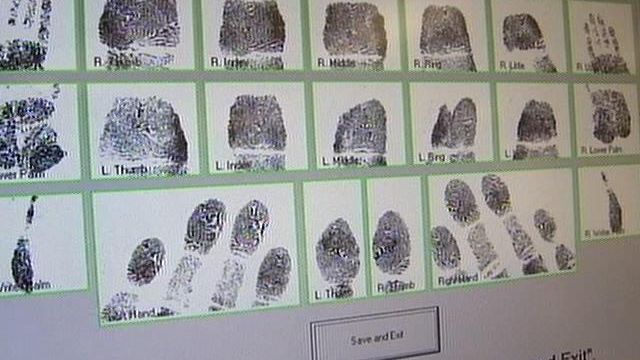Local News
Wake County Goes High-Tech to Fight Crime
Digital technology is allowing law enforcement agencies in Wake County to solve crimes quicker and more efficiently.
Posted — UpdatedRALEIGH, N.C. — Digital technology is allowing law enforcement agencies in Wake County to solve crimes quicker and more efficiently.
Last month, the City-County Bureau of Identification added the new technology to its processing area in downtown Raleigh. The high-tech equipment allows agents to process criminal suspects faster and more accurately.
With the scan of a fingerprint, for example, agents can search against database records almost instantly to help verify a person's identity.
A more in-depth scan takes images of a person's entire hand, and uploads them into a growing database of already 40,000 palm prints, 2,500 of which are currently unmatched.
Eight new digital cameras allow suspects' mug shots to be taken with such precision that they can be used for facial recognition -- a feature that isn't yet available for the agency but is likely within the next couple of years.
With that, for example, CCBI agent Andy Parker says, a surveillance or composite photo of a perpetrator could be cross-referenced with mug shots on file to retrieve possible suspects.
CCBI is only one of two such agencies in the United States that uses such technology -- the other being the Sacramento, Calif. Sheriff's Office.
"We need every advantage we can possibly get when dealing with suspects," Parker said. "And we would be foolish not to incorporate the technology that's available nowadays into crime fighting."
Parker has supervised and helped implement the new digital technology. Agents have been working on digitizing prints to build their own palm print database and a fingerprint database that is independent of the State Bureau of Investigation's.
Since the system launched April 26, Parker said the agency has already seen a large number of cases solved that might not have been solved otherwise, such as auto thefts and residential burglaries.
"A little short of a month's time, and we have recorded right at 30 suspects who have been identified using this technology," he said.
CCBI Director Sam Pennica credits those arrests, in part, to the speed that data is captured and processed.
"Prior to this technology, there was a four- to six-week delay for information to be entered into the database and compared to latent fingerprints and palm prints at the crime scene," he said.
Under that process, investigators solved about 233 cases since December 2005.
"Now, it is less than a 24-hour period," Pennica said.
Before the new technology, the only way agents could compare data was to have an officer give a suspect's name. But now, agents can take prints and compare them to data on file and give investigators the name of a potential suspect.
The equipment also means faster processing times for those arrested, Pennica said. Using the traditional ink-and-paper method, agents typically spent about 10 minutes fingerprinting a suspect. With the new technology, agents are able to process suspects in about three minutes.
Pennica said that means officers can avoid long waits for processing and get back to the business of enforcing laws and fighting crime.
Faster processing also means agents have more time to fingerprint more suspects, Pennica said. Prior to April 26, only people arrested for felonies -- about a third -- were fingerprinted.
Now, agents are able to fingerprint everyone allowed under state law, which excludes those arrested for misdemeanor traffic violations, such as speeding.
"That's increased our database by two-thirds, so it gives us more suspects to compare to," Pennica said.
And that means a greater chance to capture criminals who have avoided arrest and the possibility of making faster arrests in the future, he said.
• Credits
Copyright 2024 by Capitol Broadcasting Company. All rights reserved. This material may not be published, broadcast, rewritten or redistributed.





